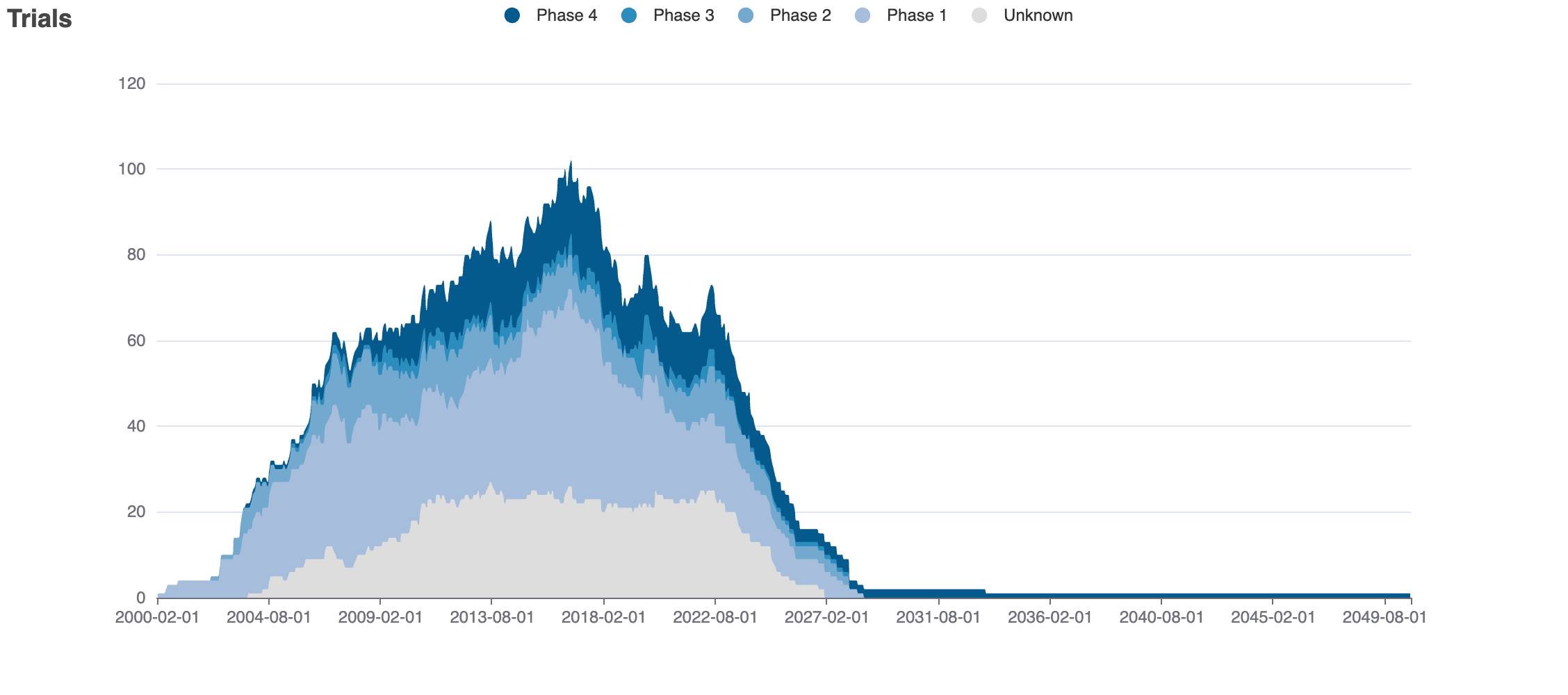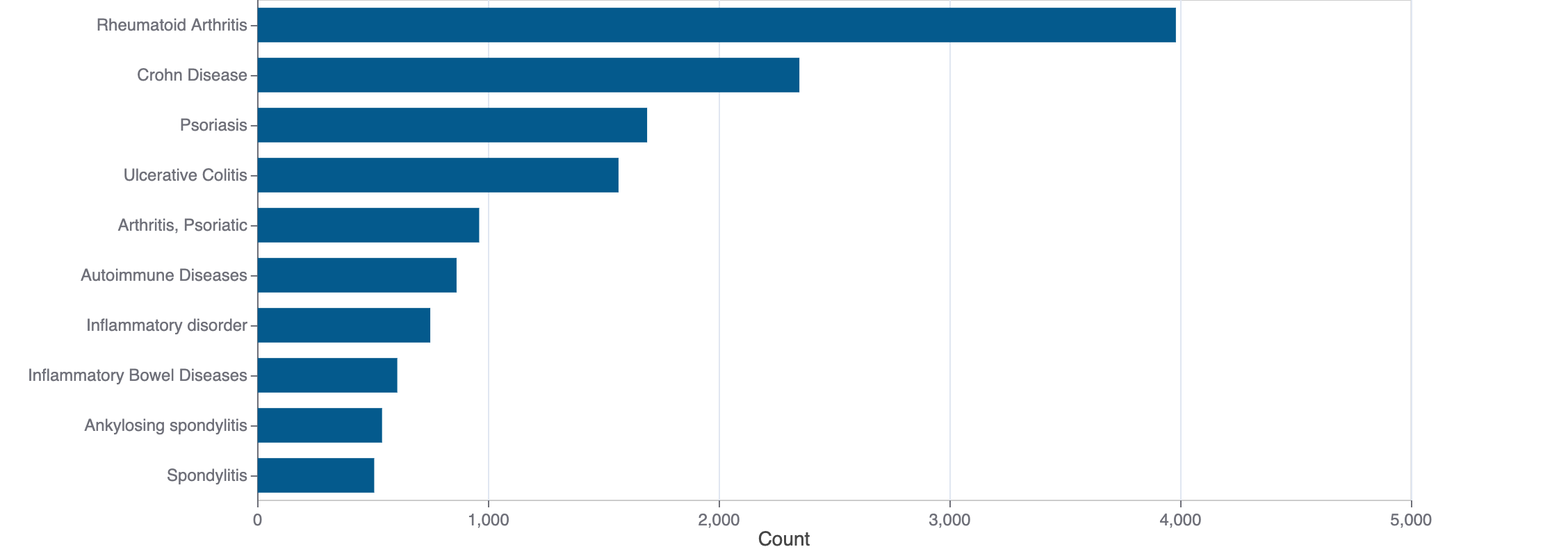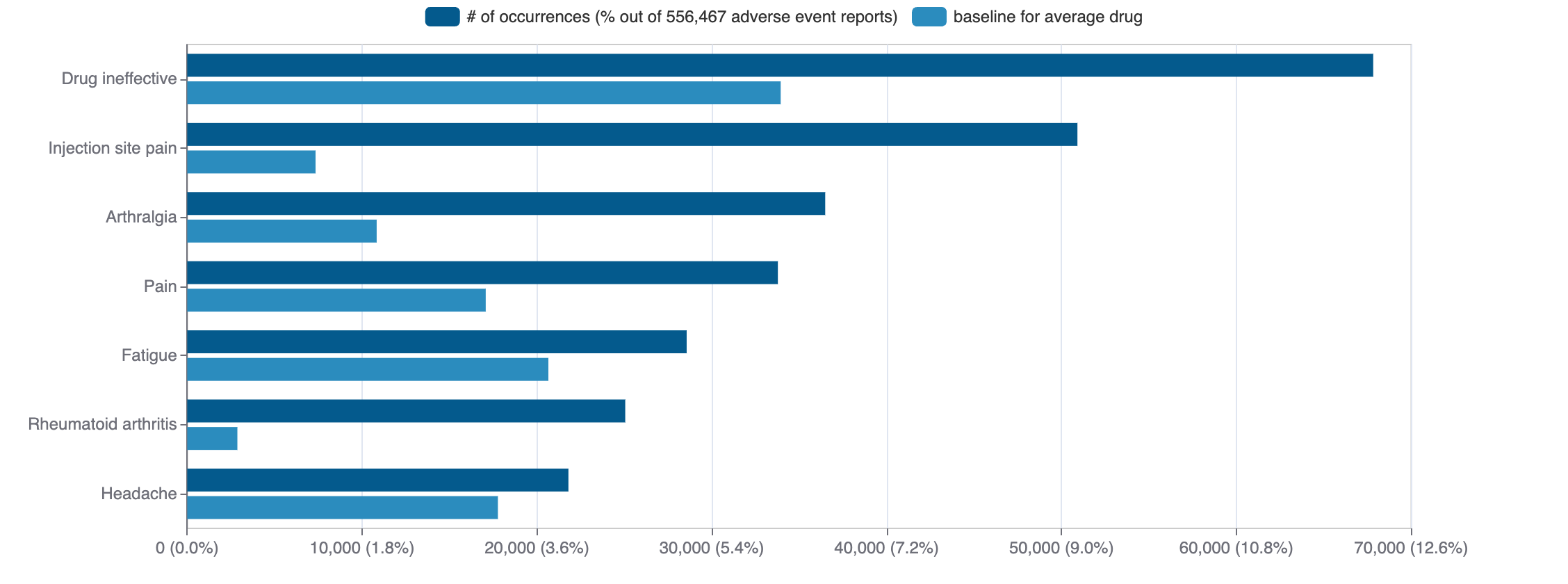Myrbetriq, Betmiga(mirabegron)
Betmiga, Myrbetriq (mirabegron) is a small molecule pharmaceutical. Mirabegron was first approved as Myrbetriq on 2012-06-28. It is used to treat overactive urinary bladder and urge urinary incontinence in the USA. It has been approved in Europe to treat overactive urinary bladder. The pharmaceutical is active against beta-3 adrenergic receptor. In addition, it is known to target beta-2 adrenergic receptor and beta-1 adrenergic receptor.
Download report
Favorite
Top 200 Pharmaceuticals by Retail Sales
Commercial
Therapeutic Areas
Therapeutic Area | MeSH |
|---|---|
| urogenital diseases | D000091642 |
| signs and symptoms pathological conditions | D013568 |
Trade Name
FDA
EMA
Myrbetriq, Myrbetriq granules (generic drugs available since 2022-09-28)
Drug Products
FDA
EMA
New Drug Application (NDA)
New Drug Application (NDA)
Abbreviated New Drug Application (ANDA)
Abbreviated New Drug Application (ANDA)
Labels
FDA
EMA
Brand Name | Status | Last Update |
|---|---|---|
| myrbetriq | New Drug Application | 2022-12-15 |
Indications
FDA
EMA
Indication | Ontology | MeSH | ICD-10 |
|---|---|---|---|
| overactive urinary bladder | EFO_1000781 | D053201 | N32.81 |
| urge urinary incontinence | EFO_0006865 | D053202 | N39.41 |
Agency Specific
FDA
EMA
Expiration | Code | ||
|---|---|---|---|
MIRABEGRON, MYRBETRIQ, APGDI | |||
| 2024-09-25 | PED | ||
| 2024-03-25 | I-855 | ||
MIRABEGRON, MYRBETRIQ GRANULES, APGDI | |||
| 2024-09-25 | PED | ||
| 2024-03-25 | NP | ||
HCPCS
No data
Clinical
Clinical Trials
142 clinical trials
View more details

Mock data
Subscribe for the real data
Subscribe for the real data
Indications Phases 4
Indication | MeSH | Ontology | ICD-10 | Ph 1 | Ph 2 | Ph 3 | Ph 4 | Other | Total |
|---|---|---|---|---|---|---|---|---|---|
| Overactive urinary bladder | D053201 | EFO_1000781 | N32.81 | 4 | 8 | 17 | 23 | 15 | 66 |
| Healthy volunteers/patients | — | 23 | 1 | — | 2 | — | 26 | ||
| Urge urinary incontinence | D053202 | EFO_0006865 | N39.41 | — | — | 2 | 4 | 1 | 7 |
| Urinary incontinence | D014549 | HP_0000020 | R32 | 1 | 1 | 3 | 1 | — | 5 |
| Prostatic hyperplasia | D011470 | EFO_0000284 | N40 | — | 1 | — | 2 | 1 | 4 |
| Obesity | D009765 | EFO_0001073 | E66.9 | — | 1 | — | 2 | — | 3 |
| Parkinson disease | D010300 | EFO_0002508 | G20 | — | — | — | 3 | — | 3 |
| Nephrolithiasis | D053040 | N20.0 | — | — | 1 | 1 | — | 2 | |
| Interstitial cystitis | D018856 | EFO_1000869 | N30.1 | — | — | 1 | 1 | — | 2 |
| Nocturia | D053158 | R35.1 | — | — | — | 1 | 1 | 2 |
Show 2 more
Indications Phases 3
Indication | MeSH | Ontology | ICD-10 | Ph 1 | Ph 2 | Ph 3 | Ph 4 | Other | Total |
|---|---|---|---|---|---|---|---|---|---|
| Urinary bladder diseases | D001745 | N32.9 | — | 1 | 4 | — | 2 | 7 | |
| Urologic diseases | D014570 | N39.9 | — | 1 | 2 | — | 2 | 5 | |
| Neurogenic urinary bladder | D001750 | HP_0000011 | N31 | 1 | 2 | 1 | — | — | 3 |
| Heart failure | D006333 | EFO_0003144 | I50 | — | 3 | 1 | — | — | 3 |
Indications Phases 2
Indication | MeSH | Ontology | ICD-10 | Ph 1 | Ph 2 | Ph 3 | Ph 4 | Other | Total |
|---|---|---|---|---|---|---|---|---|---|
| Spinal cord injuries | D013119 | EFO_1001919 | 1 | 2 | — | — | — | 3 | |
| Lower urinary tract symptoms | D059411 | EFO_0008008 | — | 2 | — | — | 1 | 3 | |
| Prediabetic state | D011236 | EFO_1001121 | R73.03 | 1 | 1 | — | — | — | 2 |
| Erectile dysfunction | D007172 | EFO_0004234 | F52.21 | 1 | 2 | — | — | — | 2 |
| Essential thrombocythemia | D013920 | D47.3 | — | 1 | — | — | — | 1 | |
| Polycythemia vera | D011087 | D45 | — | 1 | — | — | — | 1 | |
| Primary myelofibrosis | D055728 | D47.4 | — | 1 | — | — | — | 1 | |
| Prostatic neoplasms | D011471 | C61 | — | 1 | — | — | — | 1 | |
| Blood pressure | D001794 | EFO_0004325 | — | 1 | — | — | — | 1 | |
| Autonomic dysreflexia | D020211 | EFO_1001762 | G90.4 | — | 1 | — | — | — | 1 |
Show 13 more
Indications Phases 1
Indication | MeSH | Ontology | ICD-10 | Ph 1 | Ph 2 | Ph 3 | Ph 4 | Other | Total |
|---|---|---|---|---|---|---|---|---|---|
| Pharmacokinetics | D010599 | 6 | — | — | — | — | 6 | ||
| Biological availability | D001682 | 2 | — | — | — | — | 2 | ||
| Drug interactions | D004347 | 2 | — | — | — | — | 2 | ||
| Polycystic ovary syndrome | D011085 | EFO_0000660 | E28.2 | 1 | — | — | — | — | 1 |
| Metabolic syndrome | D024821 | EFO_0000195 | E88.81 | 1 | — | — | — | — | 1 |
| Esophageal achalasia | D004931 | HP_0002571 | K22.0 | 1 | — | — | — | — | 1 |
| Metabolism | D008660 | GO_0008152 | 1 | — | — | — | — | 1 | |
| Intraocular pressure | D007429 | 1 | — | — | — | — | 1 | ||
| Renal insufficiency | D051437 | HP_0000083 | N19 | 1 | — | — | — | — | 1 |
Indications Without Phase
Indication | MeSH | Ontology | ICD-10 | Ph 1 | Ph 2 | Ph 3 | Ph 4 | Other | Total |
|---|---|---|---|---|---|---|---|---|---|
| Type 2 diabetes mellitus | D003924 | EFO_0001360 | E11 | — | — | — | — | 2 | 2 |
| Sexual behavior | D012725 | — | — | — | — | 1 | 1 | ||
| Behavior therapy | D001521 | — | — | — | — | 1 | 1 | ||
| Cardiovascular diseases | D002318 | EFO_0000319 | I98 | — | — | — | — | 1 | 1 |
| Nocturnal enuresis | D053206 | N39.44 | — | — | — | — | 1 | 1 |
Epidemiology
Epidemiological information for investigational and approved indications
View more details
Drug
General
| Drug common name | MIRABEGRON |
| INN | mirabegron |
| Description | Mirabegron is a monocarboxylic acid amide obtained by formal condensation of the carboxy group of 2-amino-1,3-thiazol-4-ylacetic acid with the anilino group of (1R)-2-{[2-(4-aminophenyl)ethyl]amino}-1-phenylethanol. Used for the treatment of overactive bladder syndrome. It has a role as a beta-adrenergic agonist. It is a member of 1,3-thiazoles, an aromatic amide, a member of ethanolamines and a monocarboxylic acid amide. |
| Classification | Small molecule |
| Drug class | beta3 adrenoreceptor agonists |
| Image (chem structure or protein) | |
| Structure (InChI/SMILES or Protein Sequence) | Nc1nc(CC(=O)Nc2ccc(CCNC[C@H](O)c3ccccc3)cc2)cs1 |
Identifiers
| PDB | — |
| CAS-ID | 223673-61-8 |
| RxCUI | 1300786 |
| ChEMBL ID | CHEMBL2095212 |
| ChEBI ID | 65349 |
| PubChem CID | 9865528 |
| DrugBank | DB08893 |
| UNII ID | MVR3JL3B2V (ChemIDplus, GSRS) |
Target
Agency Approved
Alternate
ADRB2
ADRB2
ADRB1
ADRB1
Organism
Homo sapiens
Gene name
ADRB2
Gene synonyms
ADRB2R, B2AR
NCBI Gene ID
Protein name
beta-2 adrenergic receptor
Protein synonyms
adrenergic, beta-2-, receptor, surface, adrenoceptor beta 2 surface, Beta-2 adrenoceptor, Beta-2 adrenoreceptor, catecholamine receptor
Uniprot ID
Mouse ortholog
Adrb2 (11555)
beta-2 adrenergic receptor (Q8BH38)
Variants
Clinical Variant
No data
Financial
No data
Trends
PubMed Central
Top Terms for Disease or Syndrome:

Mock data
Subscribe for the real data
Subscribe for the real data
Additional graphs summarizing 1,511 documents
View more details
Safety
Black-box Warning
No Black-box warning
Adverse Events
Top Adverse Reactions

Mock data
Subscribe for the real data
Subscribe for the real data
1,108 adverse events reported
View more details
Premium feature
Learn more about premium features at pharmakb.com
Learn more
